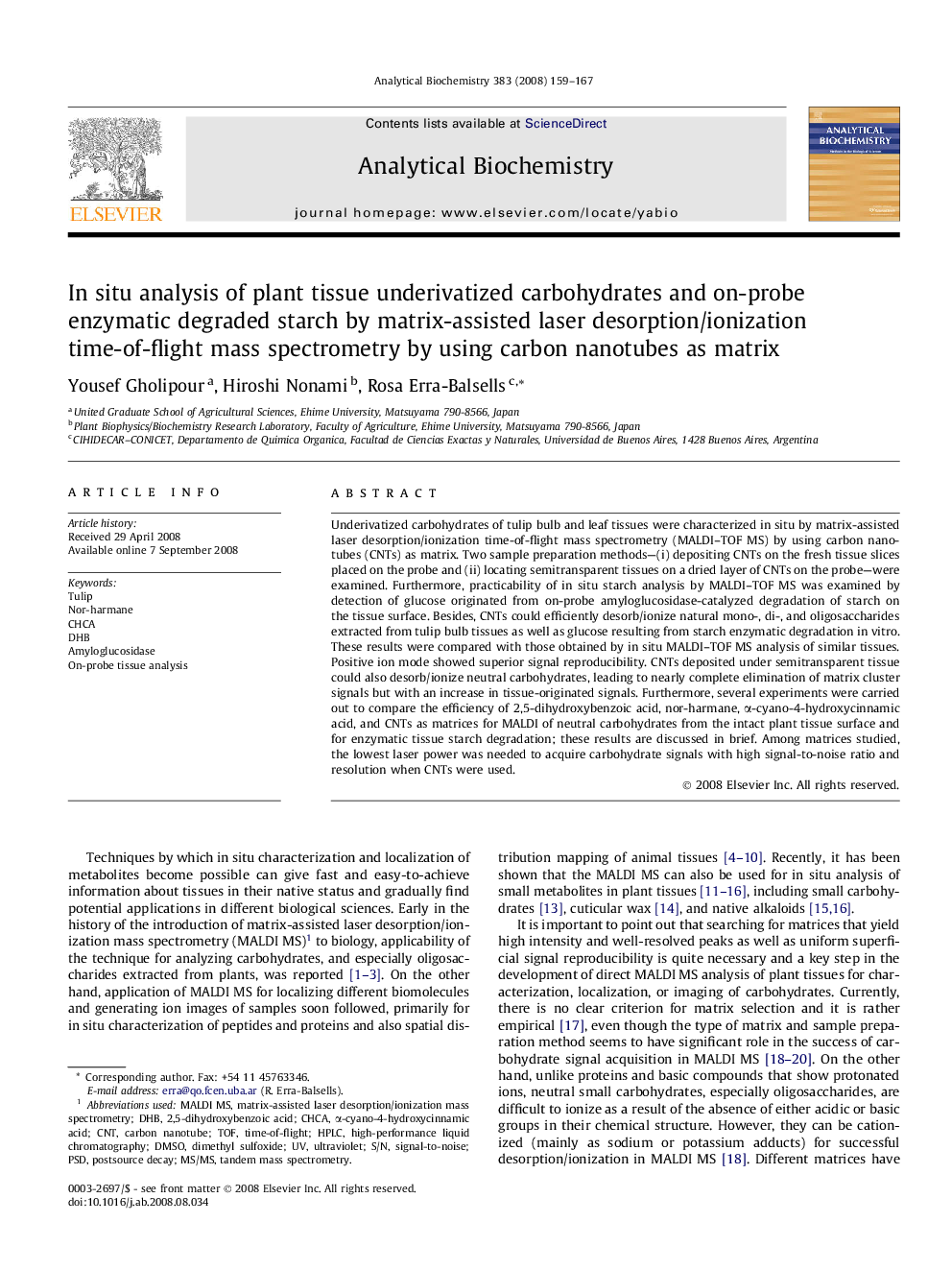| Article ID | Journal | Published Year | Pages | File Type |
|---|---|---|---|---|
| 1174472 | Analytical Biochemistry | 2008 | 9 Pages |
Underivatized carbohydrates of tulip bulb and leaf tissues were characterized in situ by matrix-assisted laser desorption/ionization time-of-flight mass spectrometry (MALDI–TOF MS) by using carbon nanotubes (CNTs) as matrix. Two sample preparation methods—(i) depositing CNTs on the fresh tissue slices placed on the probe and (ii) locating semitransparent tissues on a dried layer of CNTs on the probe—were examined. Furthermore, practicability of in situ starch analysis by MALDI–TOF MS was examined by detection of glucose originated from on-probe amyloglucosidase-catalyzed degradation of starch on the tissue surface. Besides, CNTs could efficiently desorb/ionize natural mono-, di-, and oligosaccharides extracted from tulip bulb tissues as well as glucose resulting from starch enzymatic degradation in vitro. These results were compared with those obtained by in situ MALDI–TOF MS analysis of similar tissues. Positive ion mode showed superior signal reproducibility. CNTs deposited under semitransparent tissue could also desorb/ionize neutral carbohydrates, leading to nearly complete elimination of matrix cluster signals but with an increase in tissue-originated signals. Furthermore, several experiments were carried out to compare the efficiency of 2,5-dihydroxybenzoic acid, nor-harmane, α-cyano-4-hydroxycinnamic acid, and CNTs as matrices for MALDI of neutral carbohydrates from the intact plant tissue surface and for enzymatic tissue starch degradation; these results are discussed in brief. Among matrices studied, the lowest laser power was needed to acquire carbohydrate signals with high signal-to-noise ratio and resolution when CNTs were used.
